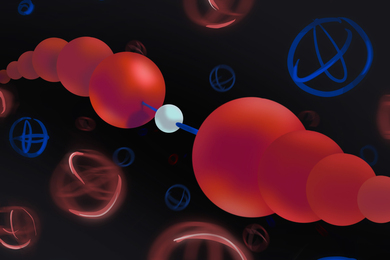At around an hour past dawn Saturday, the MIT-built High-Energy Transient Explorer (HETE) spotted a massive gamma-ray burst that briefly outshone the entire universe in gamma rays. Two hours later, this burst, brighter than 99 percent of its counterparts and only two billion light years from Earth, was still 10 trillion times brighter than the sun.
MIT scientists and others arriving on the scene of this and an October gamma-ray burst surmised that they had witnessed the death of a gigantic star and the birth of something monstrous in its place, possibly a brand-new, spinning black hole.
The Oct. 4, 2002 observation, featured in the March 20 issue of Nature, is the most detailed of any gamma-ray burst to date and provides confirmation of the "collapsar model," in which the core of a supermassive star is thought to collapse into a black hole. The observation was made by NASA's High-Energy Transient Explorer (HETE), built by MIT, and ground-based robotic telescopes and fast-acting researchers around the globe.
In a separate result, an MIT scientist reported at the March 24 meeting of the American Astronomical Society that NASA's Chandra X-ray Observatory helped confirm that a different gamma-ray burst (first spotted by HETE on Aug. 13, 2002) was connected to the death of a massive star.
"If a gamma-ray burst were a crime, then we now have strong circumstantial evidence that a supernova explosion was at the scene," said Nathaniel A. Butler, a graduate student in physics. "Our observation supports two of the most important features of the popular supernova model for gamma-ray bursts. An extremely massive star, which likely exploded less than two months prior to the gamma-ray burst, was beamed into a narrow cone."
Around dawn on Saturday, March 29, HETE spotted one the brightest and closest gamma-ray bursts yet. At its peak, the afterglow was visible with backyard amateur telescopes. The burst was relatively nearby, approximately two billion light years away.
"Gamma-ray bursts must be many times more powerful than we previously thought," said George Ricker, senior research scientist in the Center for Space Research and principal investigator for HETE. "The gamma-ray portion of the burst is perhaps just the tip of the iceberg."
A version of this article appeared in MIT Tech Talk on April 2, 2003.





